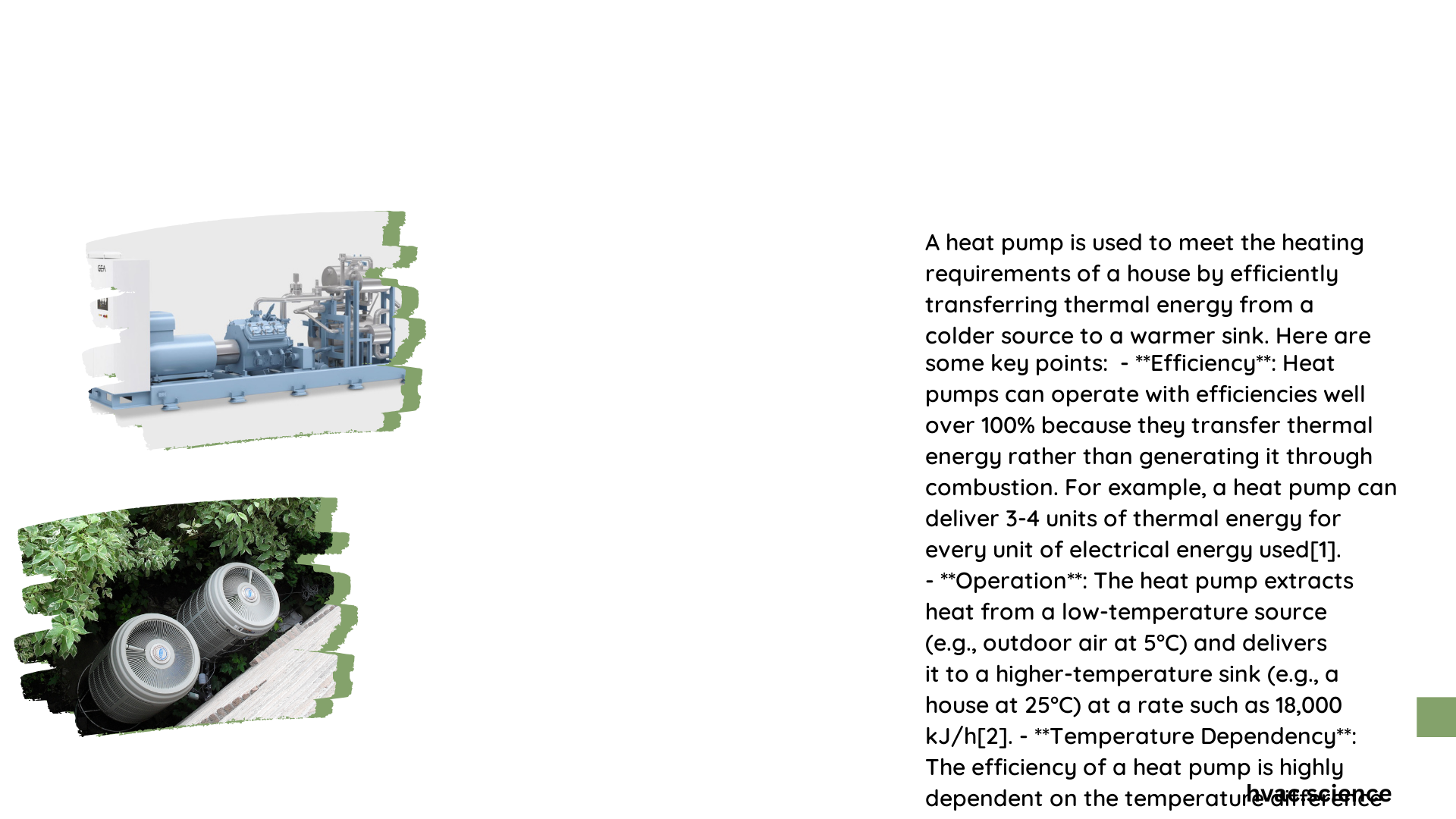A heat pump is a versatile and efficient system used to meet heating requirements in residential and commercial buildings. It operates by transferring heat from the outside air or ground into the indoor space, providing warmth during colder months. Heat pumps are known for their energy efficiency, ability to both heat and cool, and potential for significant cost savings over traditional heating methods. This article explores how heat pumps effectively meet heating needs, their efficiency metrics, and important considerations for installation and operation.
What are the Key Efficiency Metrics for Heat Pumps in Heating Mode?
When evaluating how a heat pump meets heating requirements, two primary efficiency metrics are crucial:
- HSPF (Heating Seasonal Performance Factor)
- Measures the efficiency of a heat pump in heating mode
- Calculated by dividing total heating output (BTUs) by total electricity consumed (watt-hours) over a heating season
- Higher HSPF indicates better efficiency
- Typical range: 8 to 10
-
Minimum requirement for new heat pumps: 7.7
-
SEER (Seasonal Energy Efficiency Ratio)
- Measures cooling efficiency, not directly related to heating
- Important for overall heat pump performance
- Higher SEER indicates better efficiency in cooling mode
How Do Heat Pump Efficiency Ratings Impact Heating Performance?

Heat pump efficiency ratings directly affect heating performance and energy consumption:
- Higher HSPF ratings result in:
- More efficient heating
- Lower energy bills
-
Reduced environmental impact
-
Minimum efficiency standards:
- HSPF: 7.7 for new heat pumps
-
SEER: 14 for Energy Star certification
-
Impact on operational costs:
- More efficient heat pumps (higher HSPF) deliver more heat per unit of electricity consumed
- Can lead to significant savings on heating bills, especially in colder climates
What Factors Determine Heat Pump Heating Capacity?
Several factors influence the heating capacity required from a heat pump:
- Home Size: Larger homes generally require higher capacity heat pumps
- Insulation Quality: Better insulation reduces heat loss, allowing for smaller capacity units
- Climate Zone: Colder regions need heat pumps with higher heating capacities
- Desired Indoor Temperature: Higher temperature settings increase the heating load
To determine the appropriate heat pump size, HVAC professionals consider these factors and calculate the total heating load in BTUs (British Thermal Units).
How is a Heat Pump Properly Sized for Heating Requirements?
Proper sizing of a heat pump is crucial for optimal performance and efficiency. Here’s how it’s done:
- Heat Load Calculation:
- Performed by HVAC professionals
-
Considers factors like home size, insulation, climate, and desired temperature
-
BTU Determination:
- Calculate the required BTUs (British Thermal Units) per hour
-
Example: A 2,000 sq ft home might need 50,000-60,000 BTUs/hour in a moderate climate
-
Matching to Available Units:
- Select a heat pump model that closely matches the calculated BTU requirement
-
Slightly oversizing is preferable to undersizing
-
Consider Dual Fuel Systems:
- In very cold climates, a dual fuel system (heat pump + furnace) might be recommended
What are the Steps in Heat Pump Installation for Heating?
The installation process for a heat pump to meet heating requirements involves several key steps:
- Site Assessment:
- Evaluate the home’s heating needs
-
Determine the best location for indoor and outdoor units
-
Equipment Selection:
-
Choose the appropriate heat pump model based on heating load calculations
-
Permit Acquisition:
-
Obtain necessary local building and electrical permits
-
Installation:
- Mount outdoor unit on a stable, level surface
- Install indoor air handler or connect to existing ductwork
- Run refrigerant lines between indoor and outdoor units
-
Connect electrical wiring
-
System Charging:
-
Add refrigerant to the system according to manufacturer specifications
-
Testing and Commissioning:
- Check for proper operation, including heating output and efficiency
-
Ensure all safety features are functioning correctly
-
User Education:
- Instruct homeowners on proper use and maintenance of the heat pump system
How Does Proper Installation Affect Heat Pump Heating Efficiency?
Proper installation is critical for a heat pump to effectively meet heating requirements:
- Optimal Performance: Correct installation ensures the heat pump operates at its rated efficiency
- Energy Savings: Properly installed systems use less energy, reducing heating costs
- Longevity: Correct installation can extend the lifespan of the heat pump
- Comfort: Ensures even heating throughout the home
- Safety: Reduces risks associated with improper electrical or refrigerant connections
Common installation errors that can impact efficiency include:
– Incorrect refrigerant charge
– Improper ductwork design or sealing
– Inadequate insulation around refrigerant lines
What Maintenance is Required for Heat Pumps to Maintain Heating Efficiency?
Regular maintenance is essential for heat pumps to consistently meet heating requirements:
- Air Filter Replacement:
- Replace or clean filters monthly during heavy use
-
Improves air quality and system efficiency
-
Outdoor Unit Cleaning:
- Remove debris from around the outdoor unit
-
Clean coils annually
-
Ductwork Inspection:
- Check for leaks and seal as necessary
-
Improves overall system efficiency
-
Professional Tune-ups:
- Schedule annual maintenance by a qualified technician
-
Includes checking refrigerant levels, electrical connections, and overall system performance
-
Thermostat Programming:
- Optimize settings for energy efficiency
- Consider upgrading to a smart thermostat for better control
By following these maintenance steps, homeowners can ensure their heat pump continues to meet heating requirements efficiently throughout its lifespan.
